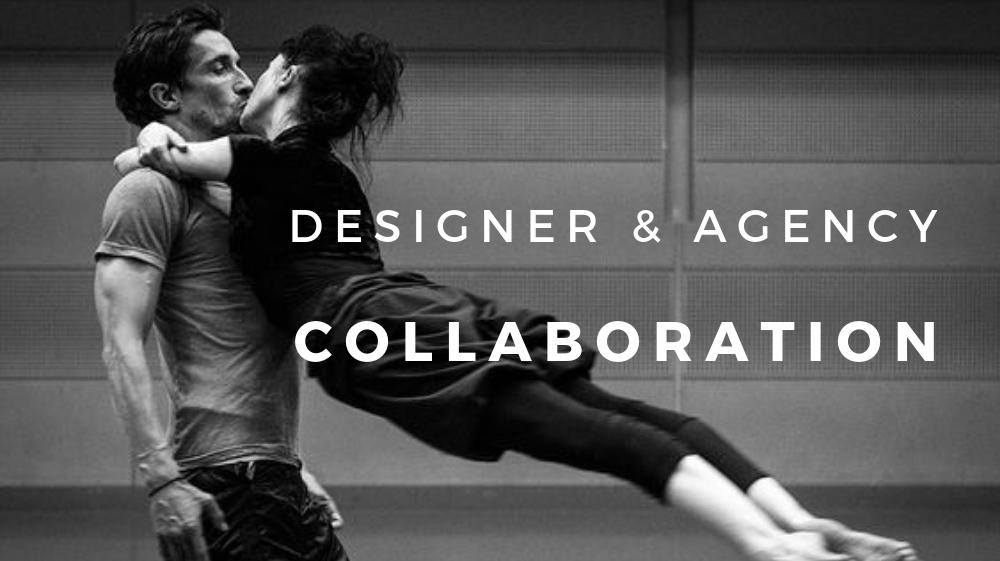A better understanding of some problems would really help people using freelancer`s services to improve their experience and benefit their future cooperation
Freelancers have changed the creative industry a lot. Studios can balance the workload peaks by adding specialists just to certain phases of a project when needed and not keeping extra staff when the workload is minimal. For designers, freelance is a chance to work on different projects without being anchored to a certain company or office. Ability to work when they want to and on what they want to. Freelance sites (birges, markets, call them whatever you like) help freelancers in searching the clients, setting DOD and DOR of the job, basically take the role of their agents. Thus, a creative person spends less time searching for the job and more time on the favorite part – creativity itself.
We decided to talk to the freelancers, whose portfolios we liked the most, about the problems that aren’t obvious for the contractor, for the clients, for us. A better understanding of some problems would really help people using freelancers’ services to improve their experience and benefit their future cooperation. Some of the problems, we hope, can be resolved with the help of Approval Studio.
Here is our conversation with Nikki Starrett – a freelance designer and teacher from Canada.
Nikky Starrett is a founder of Pomp & Sass Textile Design Studio, a textile designer for interior products providing design services to offer solutions to manufacturers wanting to refresh or renew existing collections.
At the same time Nikki is professor at the Pilon School of Business and Faculty of Applied Art and Design of Sheridan College Institute of Advanced Learning. Teaching creative studies to advertising, marketing and visual merchandising students.

Clients don’t understand the importance of giving FULL information about the project. Designers know that the lack of input data results in not meeting the deadlines and brings extra costs.
Nikki Starrett
Taras: So, Nikki, can you tell me a few words about the process of how you handle approval workflow as a designer? I know that you’re a teacher and a designer at the same time. Do you have any working cases when the customer offers you to do something and then you approve your artwork for this customer?
“These questions they just think ‘everyone knows” but it’s not true.”
Nikki: Yes. and I’ve actually got two different types that require approval. I’ll be able to give you two different perspectives. The first one is actual clients and I find that…they are very specific about what they want. But they have a hard time articulating what it is they’re looking for. Because a lot of them assume that the industry is their standards and that everyone does things exactly the same way that they do. So, I will ask them ‘Okay, you want a design. What size does your manufacturer need? Or how many colors would you like? Do you use *hand tone*?’ These are industry standard questions and I find that some of them(clients), not all of them … get very annoyed at these questions that they cannot answer. I recently realized. They’re the ones trying to hire me, but they have absolutely no idea how to set me to work, and they get annoyed. So, I have to very gently ask them for manufacturer specifications and their own requirements in a way that allows them to still have faith in my abilities. I’d be so annoyed at these questions that they just think ‘everyone knows” but it’s not true. There’s no way for me to know what their manufacturing requirements could be because they’re mildly different in each case. I had one person who only wanted a maximum of 72 pixels per square inch for wallcovering. I had another person, who needed 600 pixels per square inch. That’s significant for how I create the design and yet they didn’t realize that other people are doing it differently.
Taras: You know I just want to say, that considering all my practices and every designer or design manager I used to talk to, everyone says that the 90% of success depends on the right briefing, right questions at the very beginning.

Nikki: It’s absolutely true. I’ve actually been teaching my students how to create a brief so that they could read one correctly, and it doesn’t take a lot to create a really excellent brief. But people don’t bother doing it because they think that it’s self-explanatory. But it really does affect the success of the overall project; especially, if you’re working on set with someone who is external, who’s not a part of your everyday team, and who works remotely. Because that’s how you communicate with them.
Taras: It’s like to synchronize mindsets, to understand each other better because, one word can descend in different ways.
“Both sides have to be inclusive, kind, and understanding with one another, without jumping into the conclusions.”
Nikki: Absolutely, we all have different learning styles. So, for me to learn what I need from a client might be different from how they would learn how to produce something. We have to be inclusive, kind, and understanding with one another, without jumping into conclusions. For example, ‘oh this is just another hack that I’ve hired. I’d better cut this short’. It’s not the case. I also work with a design studio, who sells my designs. Part of the service is art direction. It’s wonderful. They’re from the Netherlands and they have excellent art direction. But when we first started to work together, they were requiring a specific type of design and they had a really hard time communicating with me. It wasn’t just a language barrier. They were very busy, and they thought that the things that they were telling me were just industry standard. And their requirements, they thought, were self-explanatory from their website, which has very little information for me to gather from. So, being busy and being overworked already, and then that language barrier, created a little bit of friction when I first started creating designs for them. Because they have such strict requirements for what they will and will not sell, that I jumped in with both feet, but they rejected 90% of my work because it didn’t fit. And that was because they didn’t give me a thorough brief.
“A project can take 3 times longer just because you didn’t give enough information during the briefing.“
Taras: Let’s remember the last time you met the problem when there was an incorrect brief or, let’s say, maybe there was a lack of info.
Nikki: Lack of information; I found it very frustrating. There are sometimes I had to go and redo work two or three times. There has been one time where I just stopped that design all together because it was never going to be good enough. And they didn’t tell me why it was never going to be good enough until I had redone it three times. And there was absolutely nothing I could do to change that one small detail. This is what happened when I was creating a photographic repeat for a wall covering wallpaper. And I was using flowers that I had photographed in the summertime months ago. It’s now wintertime here and those flowers were only in bloom for about a week. I had taken excellent photos. One photo, however, had a little bit of focus on the front petals, and the back petals were mildly out-of-focus. But when I incorporated that into my design, they said that, because it was mildly out-of-focus, it looked blurry and they wouldn’t accept it. However, it took me three reiterations of the same design before they were able to tell me that. Their requirements for my photographic repeats were strict but they hadn’t told me, that only very crisp clear photos would be accepted. I found it frustrating because I had spent now three times as long on this design, that I’m not able to even sell to other people because of the constraints of our contract.
Taras: I understand. That’s the case when the client is trying to tell the designer about the tools you have to use. But the client has to explain, maybe, the problem that you have to find a solution for but not how you will do that. It’s not a normal situation.
Nikki: I do not mind telling me ‘you know, here’s a rough design; this is the size of my bra; this is the number of colors I need’. I can do that. That’s not a problem. But it’s when they tell me, ‘well, I won’t accept anything with green’ after I’ve already designed something. I don’t mind that this design studio won’t allow for out-of-focus designs or leaves with a drop of water on them. What I mind is they tell me that I can do whatever I want, and then limit my ability to do things after I’ve only spent hours creating. If they were to tell me ‘this is what we want from you; these are the parameters, but we don’t want these specific types of designs’. That’s fine. What happens, they think that I’m incompetent because I didn’t know that they didn’t want things that were out of focus. And then, I have to resell my services and I have to repitch my talents to them, in order not to have them drop me as a freelancer. Because they do that. It’s very very quick. They say ‘well, I could just go and find another freelancer, who won’t use out-of-focus flowers; so, I’m just not going to pay you for the work you’ve already done’, and they just leave. But it wasn’t my fault. I didn’t have this information. So, it becomes almost a dance I have to keep whenever these problems happen. I have to give them an extra bonus or I have to give them another reason to stay and give me another chance to impress them.
“Not everything can be covered by brief. Freelancers and their clients suffer a lot from not being able to “sync” their thoughts and ideas between the iterations. Quick fix on interstage is not an option.”
Taras: The problem is in the definition of done at the very beginning of the project. As for me, I like the agile philosophy and scrum, and there is a definition of ‘done’ for both sides. And, at the very beginning of every project, they spend a lot of time to define what things have to be done and then we will say that the project is done. But if you miss something, then we will not find a guilty person. Who is guilty? No one is guilty because there is no conclusion about it.
Nikki: Yes, exactly. But in my experience, because most of my clients feel like they are in power and they’re used to be the boss and not in the partnership with this freelance person, they say ‘well you didn’t do your job, so it’s your fault’. It’s very frustrating and terribly unprofessional. There will be hiccups, and you fix, you move forward, and it shouldn’t be a big deal. But I find that the reason why this has happened is because they aren’t looking at me. I’m not in the room with them. If I were working on something for them in the same room and they come over to me, and they look at my computer, and they say ‘oh well, I didn’t really want that type of photo. Can you replace it?’ I can say ‘yes, of course, I can replace it’. I look them in the eyes, I smile, and they realize that it was an honest miscommunication, a lack of communication. We fixed the problem – we move on. But because I’m on the computer, they’ve had to sit down write an email, read my email, reply to my email. If they don’t see me, they can assume the worst because there are a lot of hacks out there. There are a lot of people who promise to do professional jobs without any of the skills. And they do back talk, and they do roundabout talk – It’s very easy to become suspicious. And it becomes a challenge for us to continue on in a really good way. This isn’t about all the clients. Most of my clients are very happy. I give them what they want. They go about the day and everybody’s good. But sometimes this happens, it becomes frustrating for both parties.
Taras: Yeah, that’s the problem we are working on. I can say that in the US, in Canada, in the United Kingdom, in Europe, anywhere, the problems are the same. Poor briefs, miscommunication, very busy clients. So, the project is delayed because they’re busy, they don’t give feedback, or annotations on time. And then designers spend extra hours, unpaid hours. Because of poor briefs, it takes a lot of time.
Nikki: Absolutely, and when you have spent all of the hours negotiating, renegotiating, persuading, still talking when the jobs should already be done. I would love to see a very easy-to-use app or website that helps clients create briefs in a very easy way – almost like a survey.
- who are you? (give your information)
- who is your client?
- who is your freelancer? (you can leave that blank)
- what do you want them to do?
- when do you want them to do it by?
- what are your specifications?
I just take them by the hand and walk them through the steps of creating a brief. ‘Who is this product for? What is it used for?’ And they can skip steps if it’s not applicable. Having different options for different sectors, because creating a brief for someone, who’s in the advertising industry, you need things like demographics and psychographics, but for manufacturing design you don’t need demographics and psychographics, you need manufacturer specifications, and then letting them just fill out the information in a very gentle, easy-to-use way, and send back directly to that freelancer, or print it off in a PDF. That would be such a beautiful tool and it would save a lot of people, a lot of frustration, and time. Unfortunately, I have no capacity to create something like that.
Taras: Nikki, back to the real-life. What communication channel do you use for communication with the client? You said that you prefer Skype and email.
Nikki: A lot of my clients are talking to me via email. I am currently redesigning my website to create time slots for my customers to Skype with me. Because I now have my office space back and I didn’t have that for a while, so I wasn’t able to Skype in a really professional way. I also use Instagram quite a bit because some of my clients appreciate that, but I find that my target audience is a little bit different on Instagram. So, I’d like to integrate more face-to-face meetings with my clients via Skype. Right now, it’s mostly emails.
Final Thoughts
We truly hope that after reading this material you would better understand the daily routine of a freelancer, and, which is more important, how to build up your cooperation with freelancers. At least you would know why this or that question needs to be asked and answered, no matter how obvious it seems to you. In our turn, we at Approval Studio, are working on some solutions for studios, freelancers, and their clients to be on one and the same page. At this moment we are focused on speeding up the proofing process and making the reviews as easy as possible. Maybe you have some more solutions for the problems we discussed with Nikki, or have your stories to tell. Feel free to contact our team or to post the comments below.

 TEAM SOLUTIONS
TEAM SOLUTIONS WORKFLOW SOLUTIONS
WORKFLOW SOLUTIONS



 REVIEW TOOL
REVIEW TOOL PROJECT MANAGEMENT
PROJECT MANAGEMENT TOOLS & INTEGRATIONS
TOOLS & INTEGRATIONS
 CLIENT INTERVIEWS
CLIENT INTERVIEWS









